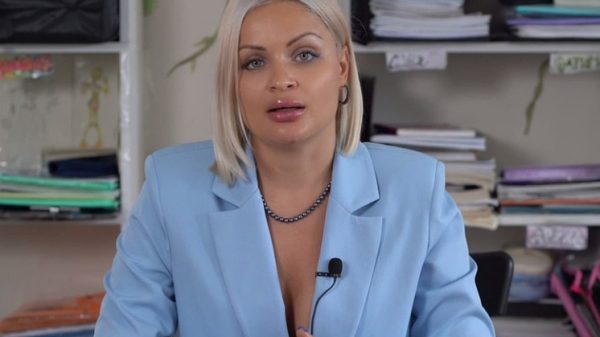The internet has transformed creative industries. Words, music, video, images and games can be distributed worldwide, instantly and for free, delivering a cornucopia of delights to your screens and mine. The problem is that, historically, it’s not been quite so good at ensuring those same creative industries get paid. Ad-supported media did the job quite well, until a couple of years ago, when it suddenly didn’t. Streaming services seem to be making a lot of money for someone, but that someone is rarely the creators who exist on those platforms.
All of which goes some way to explaining the surprise (and jealousy?) that accompanied the news that Jordan B Peterson, the alt-right’s favourite psychologist and dispenser of such advice as “stand up straight”, is making just under $1m a year online, thanks to the support of some 9,500 fans on the membership service Patreon.
In fact, Peterson is not even the most successful creator on the site; that honour goes to the leftwing American podcast Chapo Trap House, which pulls in just shy of $100,000 a month from 22,040 “patrons”.
Those success stories, at opposite ends of the political spectrum, highlight the quiet growth of Patreon from a last-ditch attempt on the part of a YouTube musician to earn a living, to the economic infrastructure underpinning a substantial chunk of the indie net.
The service was started in May 2013 by Jack Conte and his old college roommate Sam Yam. Conte was a fairly successful YouTube musician at the time. His solo YouTube channel had more than 150,000 subscribers, gathering a million views a month on his frequent releases, and as one half of the band Pomplamoose he had collaborated with the likes of Ben Folds and Nick Hornby. But despite that, he was taking home just $50 a month from the site. “We’re talking about a football-sized field of fans who love someone’s content, can’t wait to see the next blog or make the next recipe,” he told National Public Radio at the time. “And the artist is making maybe $50 a month off of it. It’s outrageous, and actually it doesn’t add up at all.”
Patreon was the answer. Rather than focusing on the millions who watched his videos, or even the hundreds of thousands who liked him enough to hit “subscribe” on YouTube itself, the goal was to convince just a few hundred of his biggest fans to open their wallets and hand over a small amount of cash, on a recurring basis, to fund his continued creative activities.
In the end, ironically, those fans ended up doing the opposite. By early 2014, when thousands of patrons were giving him more than $7,000 for each new video, it was clear that the site was something that could underpin a new sort of online economy – and also something that was so big that running it wasn’t compatible with being an indie musician.
And now it’s bigger still. On the date of its fifth anniversary, the company employs 140 people from its San Francisco offices, hosting 100,000 creators who are supported by two million patrons. Since its foundation, it has paid out more than $350m, and this year alone it’s on course to pay out “well over $300m”, according to a spokesperson; twice what it distributed in 2017.
(Keen readers will note the similarity to the membership model employed here at the Guardian, which Patreon executive Colin Sullivan, who heads the site’s legal and trust and safety teams, hasn’t missed: “I think if nothing else, it’s a great validating feeling, to see other really established outlets switch over to this model,” he says.)
Writer Laurie Penny is one of those receiving support from her fans on the site (625 patrons, giving $4,146 a month). She signed up in January 2017 although, she says, “It took me about two years from first seriously considering it to giving it a go. I felt weird about openly asking for money in a way that may be cultural, that may be gendered, I don’t know. But then I figured my audience has always been online, and the community I write for, it would be much better to be beholden to a wide range of people who like my work, rather than be beholden to the whim of an individual editor, or two or three.
“What it has meant for me in the last year and a half is that I’ve been able to do research and deep work that I had never considered before. I’m wrapping up a book right now, which I certainly wouldn’t have had time to do.”
Penny is, by the standards of the site, quite an old-school user: her patrons are by and large supporting the work she’s doing elsewhere, rather than paying for access to anything in particular. “I had big, involved plans for writing for Patreon first,” she says, but personal circumstances nixed those plans shortly after her campaign launched. “I was honest with my community, and they were like, ‘We’re here to support your writing, it’s because we like what you’re doing. We’re not paying for a product, we’re paying to see what you can do with this.’ Which was, again, astonishing to me.”
The tension between “supporting” and “subscribing” to creators has been ever present on Patreon, however. Kickstarter, another crowdfunding platform, had to accept that as it grew, not everyone wanted to hand money over to people they liked with few strings attached: some wanted to just buy stuff. Patreon has faced similar tussles, and recently changed how it describes itself from a “crowdfunding” platform to a “membership” one.
“The thinking around it was that creators in general want to feel like they’re getting paid for putting something of value out into the world,” says Sullivan. “We noticed with the crowdfunding model sometimes it feels a little more like people were begging for money, and it doesn’t feel great as a creator to be begging for money rather than asking to get paid for something of value that they’re putting out.
“And so the switch to membership is acknowledging that fact, and that it’s not just asking for money, it’s receiving payment for something.”
Of course, helping keep the lights on and the rent paid isn’t the whole story. If it was, at least some of Peterson’s supporters may have hesitated before bumping his income by another $1m a year. The shift from a “tip jar” approach to one more focused on, as Sullivan says, a “value exchange” helps: Peterson offers direct Q&As for supporters, as well as a supporter-only mailing list. Similarly, even if it isn’t a simple trade, an increasing number of people abide by a rough moral code online: if you like it, pay for it (even if you don’t have to). Peterson ends some of his videos by asking his fans to support him on Patreon, and sure enough, some of his fans support him on Patreon.
Then there are the aspects that are unique to Peterson’s audience. Penny notes that the right today “are extremely entrepreneurial. It’s gig economy extremism … If Jordan Peterson is winning, that’s one in the eye for the ‘social justice warriors’ and people like me.”
As much as payment is, obviously, crucial, for many creators the site is just as important for allowing super-fans to identify themselves, and stand out from the crowd. Writer and journalist Zoe Margolis, who launched her Patreon earlier this year, describes it as a way of regaining some of the personal connections she used to have when writing her pseudonymous sex blog, Girl With a One Track Mind.
“I think the stuff that I’ve posted that’s secret, that only people contributing can see, is more personal stuff – how neurotic I am, how boring life might be. Basically, the daily blog-type stuff: the things people used to follow me for.
“I mean obviously I used to write a sex blog … but anyone who has read enough of my blog would know it wasn’t just sex, it was neuroses and all the rest. That’s why people connected with it: because I’m human, I have flaws, and that’s what I put out on the page so honestly. It’s very honest blogging. And that I wouldn’t post out to the world.”
That clubbish feeling may still be one of Patreon’s greatest strengths as its growth attracts competition. Kickstarter recently acquired a Patreon clone, Drip, while other companies are applying concepts of membership more loosely – video game streaming site Twitch lets users sell “subscriptions” to their viewers, offering a similar sense of belonging. But, Sullivan notes, “There’s something to be said for being independent. As a creator, you are often using multiple platforms: if you have to limit your activities to just one, it’s not very natural.”
As Patreon grows, it will inevitably face new issues. Already, as the presence of Peterson suggests, it’s having to come to terms with the fact that “creator” has the sort of broad definition that can be applied to YouTube shock-jocks, porn game developers and camgirls, just as it can to musicians, artists and writers. “We don’t have an explicit boundary” about what it takes to be a creator, Sullivan says. “We don’t want to, because then you start making decisions around what is art, what is creativity.”
But it has probably already solved the hardest challenge it will ever face: simply getting people on the internet to open their wallets, enter their credit card details, and pay for content. Compared to that, everything else is small fry.























































Свежие комментарии